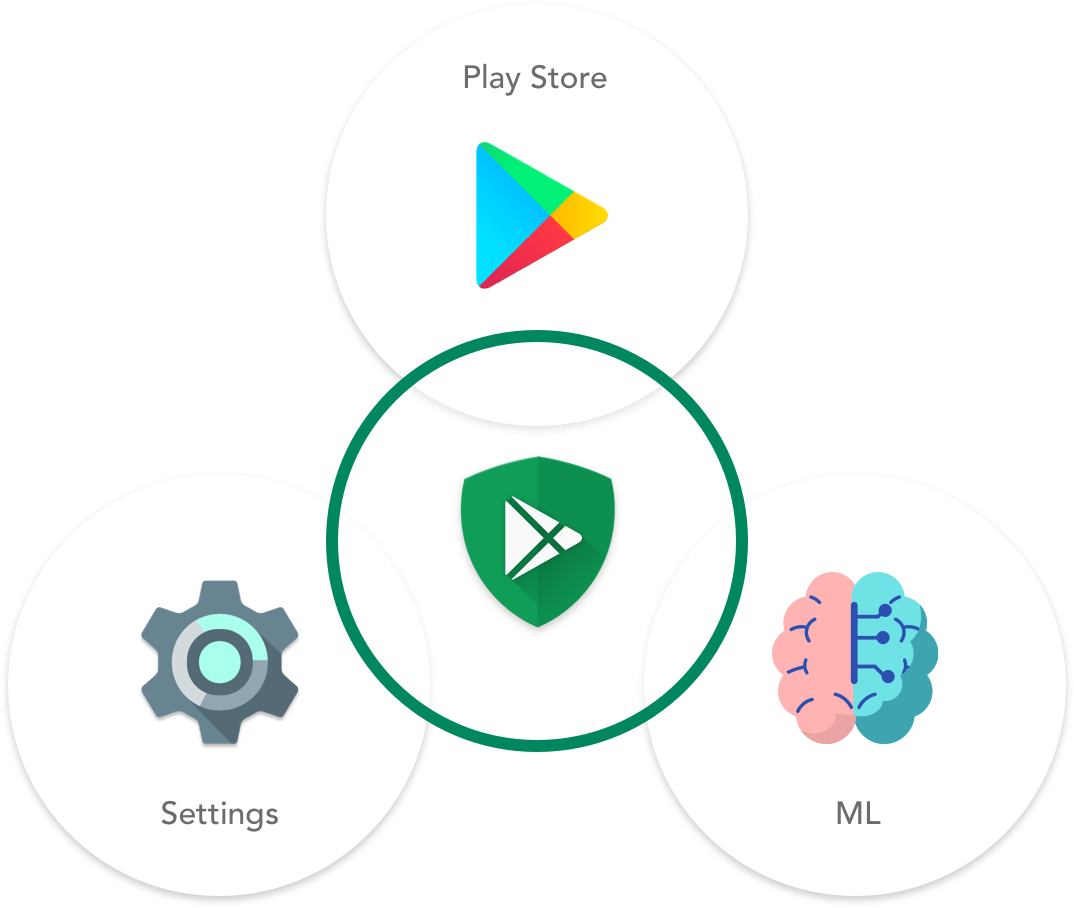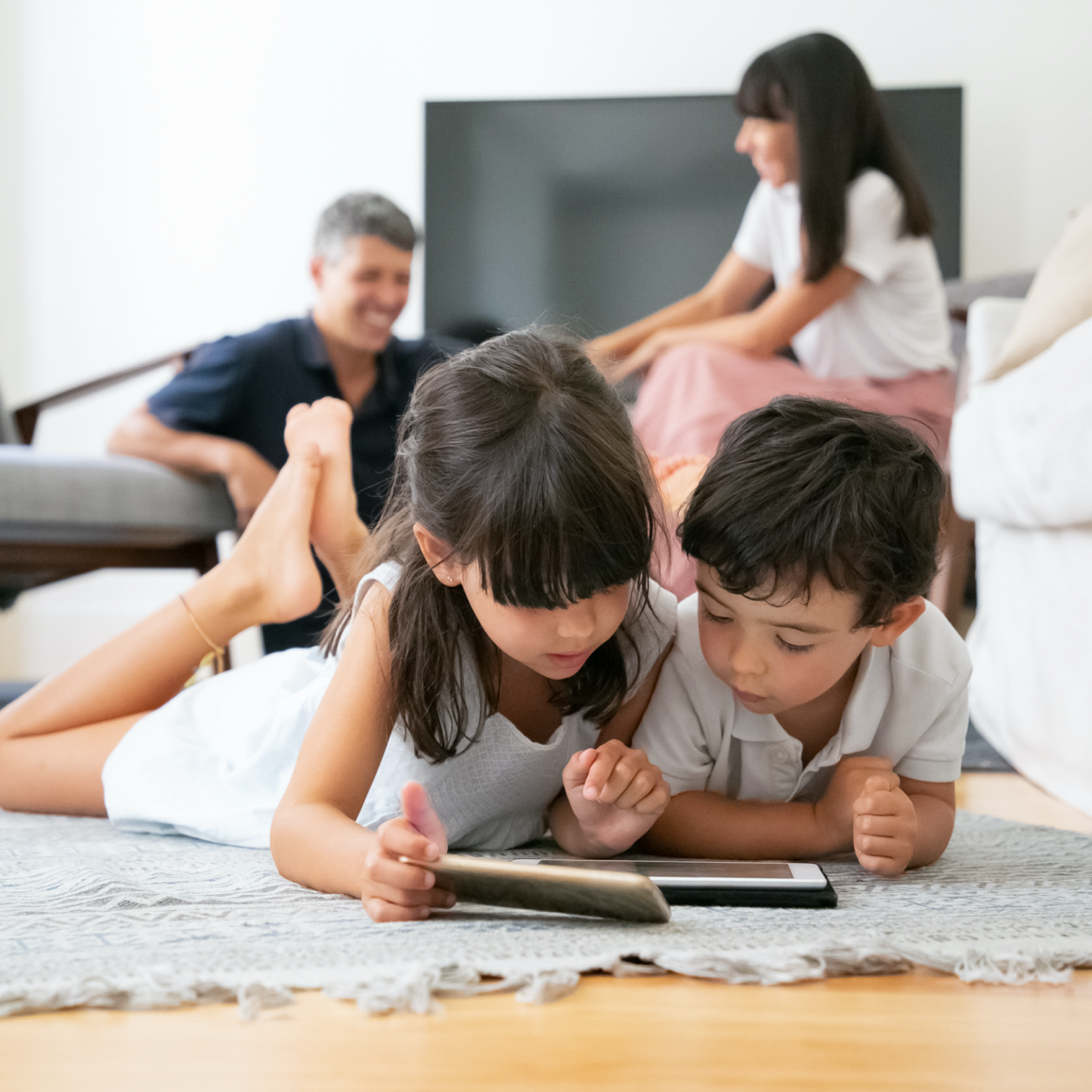Android built-in features
Protecting users’ security and privacy on Android devices at Google
How Google Play Protect works
Google Play Protect is built-in malware protection for Android 2.5 billion devices. It is backed by the strength of Google's machine-learning algorithm, which is constantly adapting and improving.
Its system is built within device settings. Play Protect scans all the apps on the device in the background and warns users if there are any security and privacy issues. Play Protect is located in the Play Store and verifies all the apps within the store.

On-device protections
Play Protect has on-device capabilities that help keep devices and data safe. These on-device services integrate with cloud-based app verification services that allow Google to push updates that constantly improve their functionality.
Block and uninstall malware
Google Play Protect bypasses users' permissions and automatically uninstalls hazardous malware. It also warns and blocks app installations from unknown sources, such as sideloading and third-party app stores.
Audit / UX / UI / Specs / Implementation support / QA
Google Play system update
I delivered the new "Google Play system update" feature within the settings where the user can check for the latest Google Play system to ensure the device's latest security and privacy protection.
UX / UI / Specs / Implementation support / QA
Settings slide
This new feature for Android 10 enabled the user to uninstall malware quickly from the settings menu screen.
UX / UI / Specs / Implementation support / QA
Android devices & versions
When designing for Android, it’s vital to make sure products, services, and new features work across all Android devices and versions.
Android devices
Android shares 71.81% of the Mobile Operating System Market Share Worldwide (March 2021). Google supports many devices, such as Samsung, Motorola, Sony, smartphones & tablets, and Chromebooks.
For every new feature I worked on, I always tested that the user journeys and the UI followed the specs and looked great on all devices. I also supported the Product Manager in presenting our new features to OEMs.

Controlling app permission for Pre Oreo and O+
For Oreo + Android versions, Google made it easy to manage app permissions via the permission manager in settings. However, Pre-Oreo runtime permissions require the user to explicitly grant or deny permission through dialogue, and the users can't control the app permissions.
I delivered the new feature enabling the user to control app permissions. The challenge was creating the best possible user flow for the Pre-Oreo and Oreo + Android versions.
UX / UI / Prototype / Specs / Implementation support / QA
Notification design
In 2019, the average U.S. smartphone user received 46 app push notifications per day. Opt-in rates are much higher on Android devices (91.1%) than on iOS (43.9%).
After the pandemic began in 2020, Android users received 53% more notifications per month than iOS users, while both had an average notification direct open rate of 8.2%.
We cannot overlook the importance of designing notifications. Bombarding users with notifications can lead them to turn off all notifications or uninstall the app itself.
Effective notification design
I audited all existing notifications for Play Protect and redesigned them to be explicit, easy to understand, relevant to users, and with strong CTAs while providing enough context. I worked closely with the copywriter, and we validated the effectiveness through user testing. We also monitored the data carefully after the launch.
When designing notifications, considering channel, grouping, and open/close states for different Android versions is essential.
Audit / UX / UI / User Research / Prototype / Specs / Implementation support / QA
Android product development
Focus on the user to achieve mass adoption.
Looking for a 10x improvement - how can we improve the product 10 times better on some key attributes that also matter to the users?
Launch and iterate to discover the problems and viability early.
Combining these values allows us to determine the minimum viable product (MVP), the version of a new product that enables the team to collect the maximum amount of validated learning about customers with the least effort and quickly deliver some user benefits.
Material design
Material is a design system created by Google to help teams build high-quality digital experiences for Android, iOS, Flutter, and the web. I have extensive knowledge of the user-centred components and guidelines covering usage, behaviours, and specifications. Accessibility and copywriting are also important aspects of Material Design.


Launch process
Like any other tech company, Google has a meticulous release process to ensure quality, usability, and accessibility and add value to the users.
In the pre-beta testing phase, the teams initially test any new products, services, or features internally. The team optimises offerings to the best of its capabilities based on feedback. Once refined, the product is released to the public for beta testing and carefully monetised.
After further optimisation, the final product is released to the media, the general public, and industry professionals.
© 2012-2025 Five Pencils Limited. All rights reserved.